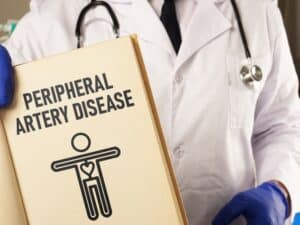
Peripheral Artery Disease (PAD) might not be something you hear about often, but it can quietly develop over time and have a big impact on your health. It is when the arteries that carry blood to your limbs, especially your legs, start to narrow, reducing blood flow. This can cause discomfort and mobility issues and, in some cases, lead to serious complications. Knowing if you’re at risk can help you catch it early and take steps to maintain your health.
At Vein and Wound Care Center of LA, we focus exclusively on the medical management of vein disease and chronic wounds, prioritizing lasting health. Our board-certified team delivers accurate diagnosis and evidence-based treatment, often correcting complications caused by cosmetic-focused procedures.
Here are risk factors to consider for early detection and successful treatment.
Age and PAD Risk
Age is one of the most significant risk factors. PAD is most common in individuals over the age of 50. As we age, plaque naturally builds up in our arteries, increasing the likelihood of narrowing and blockages. Those over 65 are especially at risk, even if they show no symptoms.
Smoking and Tobacco Use
Smoking is a major contributor to PAD. Chemicals in tobacco damage blood vessels and accelerate plaque buildup, which restricts blood flow. Current and former smokers are at much higher risk and often experience more severe symptoms.
Diabetes and PAD
People with diabetes are more likely to develop PAD. High blood sugar damages arteries over time, leading to poor circulation. Additionally, those with diabetes often have nerve damage in the feet and legs, making it harder to notice early PAD symptoms.
High Blood Pressure and Cholesterol
Both high blood pressure and high cholesterol contribute to artery damage and plaque buildup. Individuals with these conditions should be especially mindful of PAD symptoms, such as leg pain when walking, numbness, or slow-healing sores.
Family History and Other Risk Factors
Genetics also play a role. If you have a family history of heart disease or vascular conditions, your risk for PAD increases. Obesity, sedentary lifestyle, and chronic kidney disease are also contributing factors.
Take Control of Your Vein Health with PAD Treatment in Los Angeles, CA
If you’re in a high-risk group, talk to your healthcare provider about PAD screening. Early diagnosis can lead to effective treatment through lifestyle changes, medications, or minimally invasive procedures. Awareness is the first step in preventing complications and protecting your vascular health. Contact us today to schedule a consultation.
